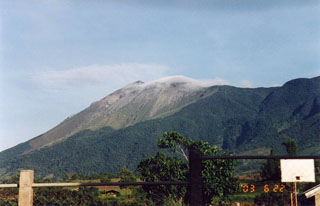Report on Kanlaon (Philippines) — 30 March-5 April 2016
Smithsonian Institution / US Geological Survey
Weekly Volcanic Activity Report, 30 March-5 April 2016
Managing Editor: Sally Sennert.
Please cite this report as:
Global Volcanism Program, 2016. Report on Kanlaon (Philippines) (Sennert, S, ed.). Weekly Volcanic Activity Report, 30 March-5 April 2016. Smithsonian Institution and US Geological Survey.
Kanlaon
Philippines
10.4096°N, 123.13°E; summit elev. 2422 m
All times are local (unless otherwise noted)
PHIVOLCS reported that long-duration tremor began at Kanlaon at 0130 on 30 March. The tremor was accompanied by gas-and-steam plumes that rose 600-700 m and drifted SW and SSW during 30 March-1 April. On 31 March minor ashfall was reported in areas downwind including in parts of La Carlota City (14 km W), La Castellana, and Bago City in Negros Occidental. The tremor continued during 2-4 April, though the energy decreased, and steam plumes rose 400-500 m. On 5 April steam plumes rose 800 m and drifted SW. The Alert Level remained at 1 (on a scale of 0-5).
Geological Summary. Kanlaon volcano (also spelled Canlaon) forms the highest point on the Philippine island of Negros. The massive andesitic stratovolcano is covered with fissure-controlled pyroclastic cones and craters, many of which are filled by lakes. The largest debris avalanche known in the Philippines traveled 33 km SW from Kanlaon. The summit contains a 2-km-wide, elongated northern caldera with a crater lake and a smaller but higher active vent, Lugud crater, to the south. Eruptions recorded since 1866 have typically consisted of phreatic explosions of small-to-moderate size that produce minor local ashfall.
Source: Philippine Institute of Volcanology and Seismology (PHIVOLCS)

